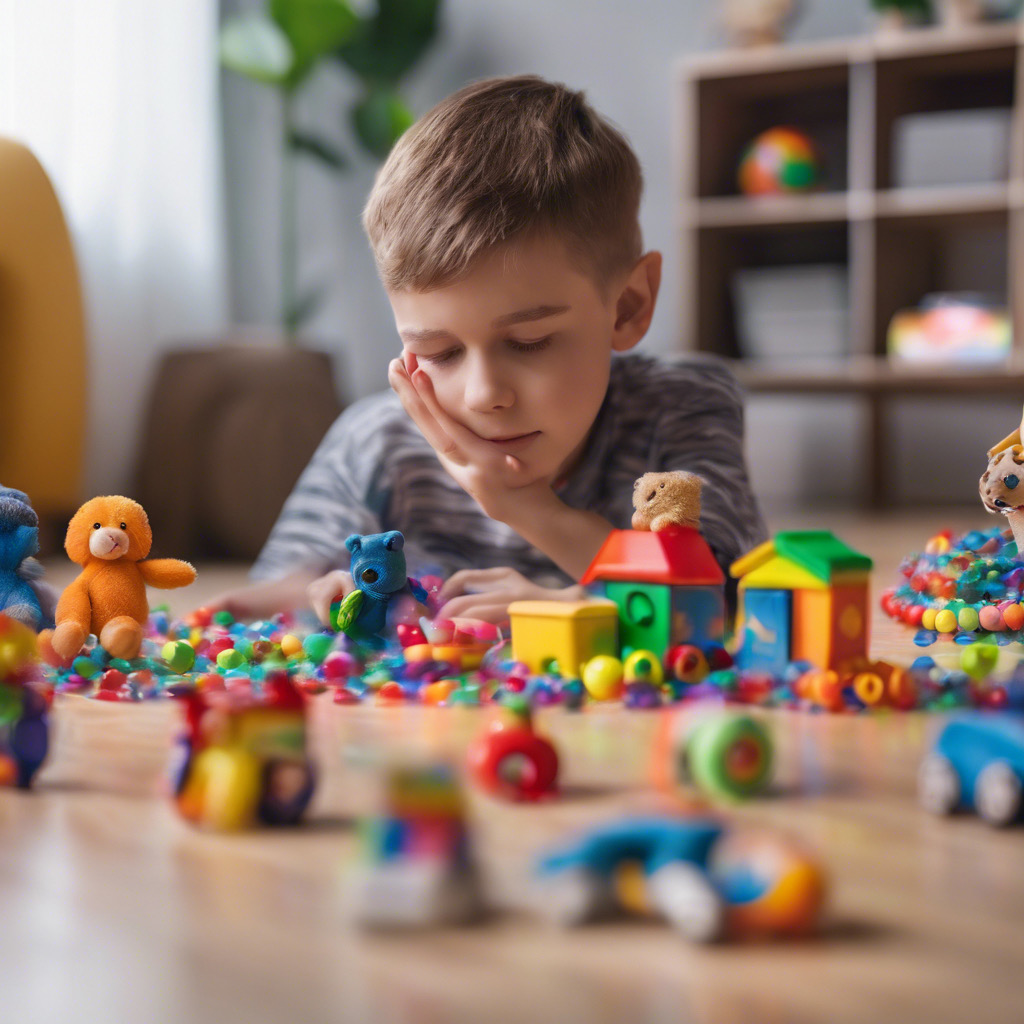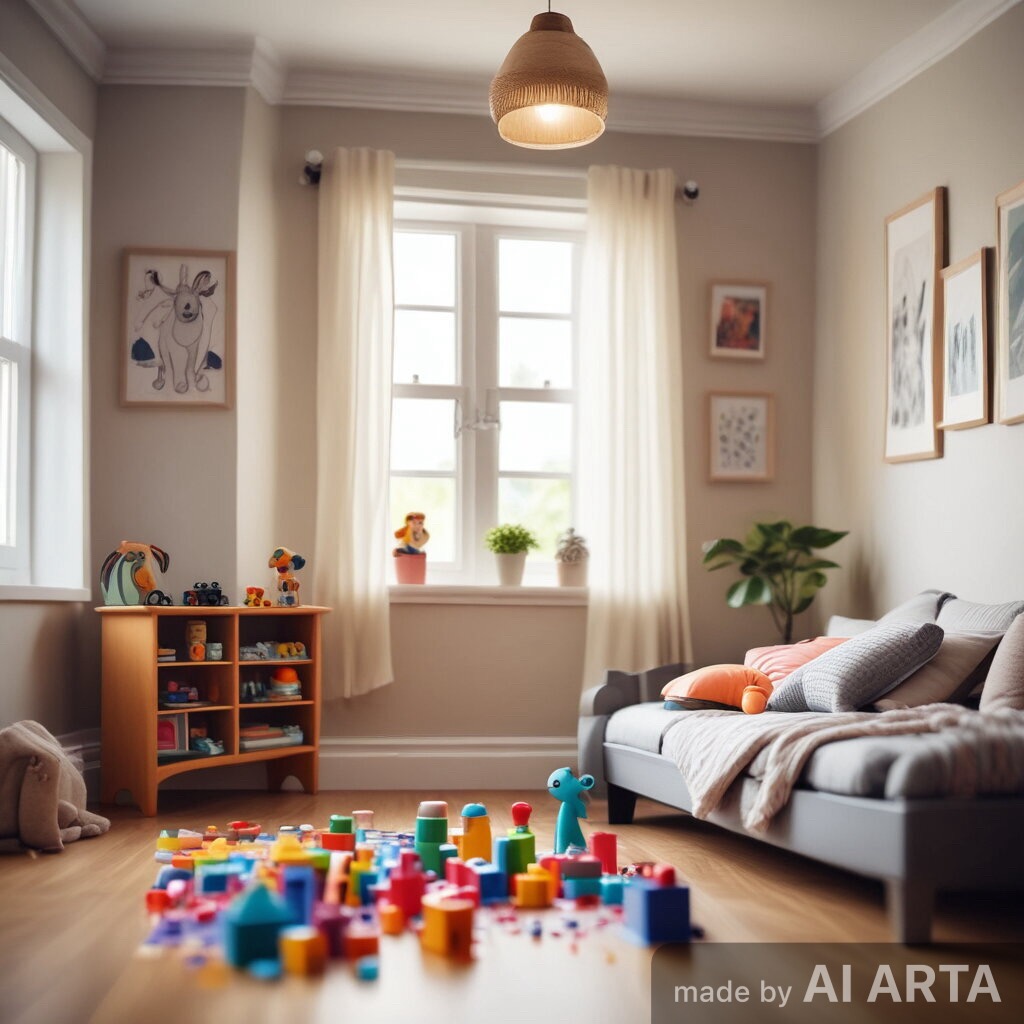How to Create a Sensory-Friendly Environment at Home with Autism Toys

Introduction
- Importance of a Sensory-Friendly Environment
- Many children with autism experience sensory processing difficulties, which can make home life challenging. A sensory-friendly environment tailored to their needs can significantly reduce stress and improve their overall well-being.
- Role of Sensory Toys in This Setup
- Sensory toys can be used to create specific zones and activities in the home that cater to sensory needs, making the home a calming and engaging place for children with autism.

1. Understanding Sensory Needs of Children with Autism
- Sensory Processing Differences
- Some children with autism are hypersensitive, meaning they are overwhelmed by sensory input, while others are hyposensitive, requiring more stimulation to stay engaged.
- How Sensory Toys Address These Needs
- Sensory toys, such as fidget toys, weighted blankets, or swings, can help children regulate their sensory input, depending on whether they need more or less stimulation.
2. Identifying the Sensory Preferences of Your Child
- Observation and Sensory Profiles
- The first step in creating a sensory-friendly home is understanding your child’s sensory preferences. Do they seek out movement? Do they avoid loud noises or bright lights? Observing their reactions to different stimuli will help you choose the right toys and tools.
- Consultation with Professionals
- Occupational therapists can provide insights into your child’s specific sensory needs and guide you in selecting appropriate sensory toys.
3. Designing Sensory Zones at Home
- Calming Sensory Zones
- Purpose: These zones are designed to help children relax and regulate their emotions when they feel overstimulated.
- Sensory Toys: Include weighted blankets, soft tactile toys, sensory lights, and noise-canceling headphones. Soft lighting and soothing colors can also help create a calming atmosphere.
- Where to Set Up: A quiet corner of the bedroom or living room can serve as a calming zone. Use bean bags, pillows, or other soft furniture to make the space cozy and comforting.
- Stimulating Sensory Zones
- Purpose: These areas are designed to energize children who are under-stimulated and need more sensory input.
- Sensory Toys: Include toys like trampolines, swings, balance boards, or spinning toys. Bright colors and upbeat music can help energize the space.
- Where to Set Up: A playroom or part of the living room can serve as a stimulating zone, where children can jump, spin, or engage in active play.
- Multi-Sensory Learning Zones
- Purpose: These zones combine different sensory inputs to help children engage in learning through play.
- Sensory Toys: Include puzzles, building blocks, tactile books, or visual sensory toys like lava lamps or light-up blocks.
- Where to Set Up: This could be part of a homeschool area or a dedicated play space where educational and sensory play meet.

4. Using Sensory Toys to Create a Sensory-Friendly Bedroom
- Designing a Calming Sleep Environment
- Many children with autism struggle with sleep due to sensory sensitivities. A well-designed bedroom can help promote relaxation and sleep.
- Sensory Toys: Weighted blankets or sensory pillows can provide proprioceptive input that is calming. A white noise machine or soft music can block out distracting sounds.
- Lighting Considerations
- Visual Sensitivities: Use adjustable lighting options such as dimmable lights or sensory lights to reduce overstimulation in the evening.
- Night Lights: Soft, low-colored night lights can help reduce anxiety at night for children who are visually sensitive to darkness.
5. Incorporating Sensory Toys Into Daily Routines
- Sensory Input During Mealtime
- Children with autism often have difficulties with eating due to sensory sensitivities. You can use sensory toys to help prepare them for mealtime.
- Sensory Toys: Fidget toys can keep their hands busy before and after meals, while oral sensory tools, like chew toys, can help regulate oral motor needs.
- Transitioning Between Activities
- Sensory toys can also be used to help children transition between activities, such as moving from playtime to homework or bedtime.
- Examples: Using a visual timer, sensory fidget toys, or soothing tactile toys during transitions can reduce anxiety and make the process smoother.
- Calming Tools for After-School Decompression
- Many children with autism find school to be a sensory overload. Sensory toys can help them decompress after school.
- Sensory Toys: Weighted lap pads, squishy toys, or tactile playdough can help children relax and recover from a stimulating day.
6. Creating a Sensory-Friendly Bathroom
- Sensory Challenges in the Bathroom
- The bathroom can be a sensory overload due to bright lights, loud sounds, and the tactile sensation of water, making bath time difficult for some children with autism.
- Solutions with Sensory Toys
- Bath Time Toys: Using sensory bath toys, such as rubber ducks, water beads, or light-up bath toys, can make the experience more enjoyable and less overwhelming.
- Tactile-Friendly Towels and Mats: Soft, plush towels and bath mats can make drying off a more pleasant experience for tactile-sensitive children.
7. Sensory Toys for Outdoor Play Areas
- Bringing Sensory-Friendly Play Outdoors
- Outdoor environments provide rich sensory experiences, but for some children with autism, outdoor play can be overwhelming. Incorporating sensory toys into outdoor spaces can make these environments more manageable.
- Outdoor Sensory Toys
- Examples: Swings, sandboxes, water tables, or textured surfaces like stepping stones can help children explore sensory experiences in a controlled way.
- Calming Outdoor Spaces: Creating a quiet outdoor area with a hammock or sensory swing can give children a place to retreat if they become overwhelmed by outdoor stimuli.
8. Managing Sensory Overload at Home
- What Causes Sensory Overload?
- Sensory overload occurs when too much sensory input overwhelms a child’s ability to process it. Common triggers include loud noises, bright lights, or chaotic environments.
- How Sensory Toys Help
- Weighted Toys and Blankets: Deep pressure input can help calm a child experiencing sensory overload.
- Fidget and Tactile Toys: These toys can provide a controlled form of stimulation, helping the child to focus on a single sensory input and block out overwhelming stimuli.
9. Creating Sensory “Breaks” Using Sensory Toys
- The Importance of Sensory Breaks
- Sensory breaks allow children with autism to step away from overwhelming situations and regulate their sensory systems.
- Setting Up Sensory Break Stations
- Sensory Toys: Include a selection of sensory toys like stress balls, chewy necklaces, or noise-canceling headphones in easily accessible “break” stations around the house.
- How to Use: Encourage children to use these spaces during times of stress or overstimulation. Allow them to engage with the toys for a few minutes before returning to their previous activity.
10. Adapting the Home as Sensory Needs Evolve
- Reevaluating Sensory Needs Over Time
- As children grow, their sensory needs often change. What works for a toddler may not be suitable for a school-aged child.
- Adjusting Sensory Zones and Toys
- For Younger Children: Sensory toys that focus on tactile and auditory stimulation are often beneficial.
- For Older Children: More sophisticated sensory tools, such as proprioceptive toys (like resistance bands or body rollers) and interactive toys, can be more appropriate as they grow.
- Creating a Dynamic, Flexible Sensory-Friendly Home
- Continually adapt and update sensory zones and toys based on your child’s changing needs, preferences, and feedback from therapists.
Conclusion
- The Importance of a Sensory-Friendly Home
- A sensory-friendly environment, enhanced with the right sensory toys, is essential for helping children with autism feel safe, engaged, and comfortable at home.
- Empowering Parents to Create These Spaces
- By observing your child’s sensory needs, consulting professionals, and thoughtfully selecting sensory toys, you can create a home that promotes your child’s well-being, emotional regulation, and developmental progress.